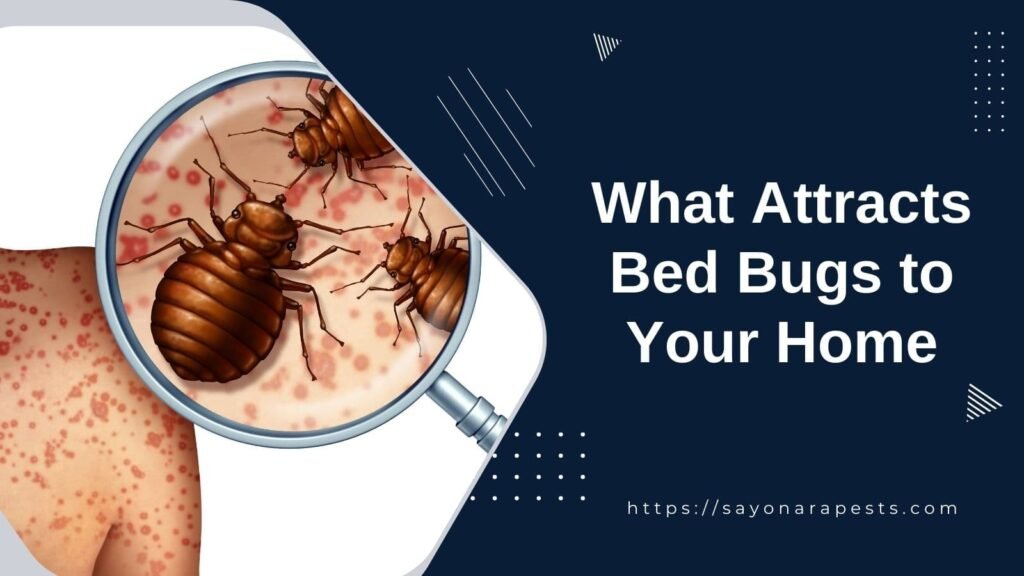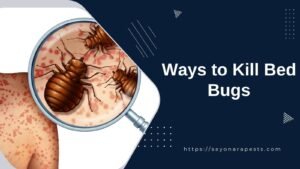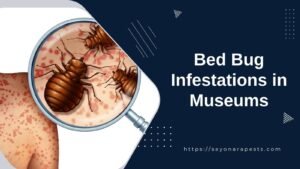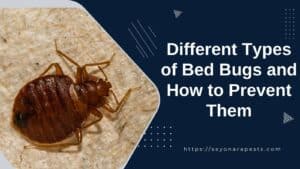Factors Attracting Bed Bugs
Understanding what attracts bed bugs to your home is key in preventing and treating infestations. These tiny pests are attracted to a variety of factors, predominantly related to their quest for a blood meal.
Preferred Hiding Spots
Bed bugs are experts at finding the perfect hiding spots within close proximity to their food source—humans. They typically prefer locations near where people sleep or spend significant amounts of time at rest. Here are some common hiding spots:
- Mattress seams
- Box springs
- Bed frames and headboards
- Furniture close to the bed
It’s important to regularly inspect these areas, especially if you suspect an infestation.
Attraction to Warmth
The quest for warmth is a significant factor in attracting bed bugs. These pests are naturally drawn to the body heat of humans, as it indicates the presence of a potential host.
This is why they’re often found in bedding or clothing that retains human warmth. Ensure to inspect items that have been in contact with heat sources, such as recently used beds or chairs.
Response to Carbon Dioxide
Carbon dioxide is like a dinner bell for bed bugs. They are highly sensitive to the carbon dioxide humans exhale, as it signals that a blood meal is nearby.
This is one reason why bed bugs tend to bite people while they’re sleeping since breathing patterns are steady and indicate a reliable feeding opportunity.
Understanding these factors is essential in both preventing and combating bed bug infestations. If you’re looking for ways to eliminate bed bugs, explore methods like killing bed bugs with heat, using steam to kill bed bugs, or using diatomaceous earth to kill bed bugs for effective solutions.
Being aware of what attracts bed bugs to your home can help you implement the best bed bug elimination techniques to keep your living spaces secure.
Bed Bugs’ Attraction Triggers
Understanding what attracts bed bugs to your home is essential in both preventing and controlling infestations. While these pesky intruders are notoriously challenging to eliminate, being aware of their attraction triggers can help you keep them at bay.
Influence of Dirty Laundry
Bed bugs are attracted to dirty laundry due to the lingering human scent, which signals a nearby host.
This attraction makes it important to manage laundry properly, especially when traveling. Keeping clothes off the floor and storing them in sealed bags can deter bed bugs from making a home in your garments.
Maintaining a tidy space where laundry is not left out can reduce the risk of attracting these pests. For more information on preventing bed bugs while traveling, visit our page on preventing bed bugs when traveling.
Preference for Dark Colors
Bed bugs show a marked preference for certain colors, particularly dark shades like red and black. These colors provide camouflage, allowing bed bugs to hide more effectively from predators.
The color preference changes throughout their lifecycle, but dark-colored sheets and furniture can often be more appealing to them.
Ensuring that your bedding and decor are not too dark might be a small step towards reducing the attractiveness of your space to these pests.
Hitchhiking Abilities
One of bed bugs’ most notorious traits is their ability to hitchhike on personal belongings, such as purses, luggage, and clothing.
This behavior makes it easy for them to travel from place to place, including into your home. When staying in hotels or using secondhand furniture, it’s crucial to inspect items for signs of bed bugs before bringing them into your living space.
Pest World outlines how these insects can sneak into your life without notice. For more tips on how to check for bed bugs in hotel rooms, browse our guide on how to check for bed bugs in hotel rooms.
By recognizing these triggers, homeowners, hoteliers, and renters can take proactive steps to prevent infestations. Strategies such as reducing clutter, using protective covers for mattresses, and regular inspections can go a long way.
For more comprehensive advice on bed bug prevention and eradication, explore our sections on ways to kill bed bugs and preventing bed bugs from spreading.
Preventing Bed Bug Infestations
Preventing bed bug infestations is a critical concern for homeowners, renters, and those in the hospitality industry. Understanding what attracts bed bugs to your home and how they spread is the first step to keeping these pests at bay.
Inspecting Secondhand Furniture
Secondhand furniture can be an economical and eco-friendly furniture choice. However, items such as mattresses, box springs, couches, and chairs could be hiding places for bed bugs.
Before integrating any secondhand furniture into your home, it is crucial to conduct a thorough inspection for signs of bed bugs, including cast skins, eggs, fecal spotting, or the insects themselves.
If you’re unsure how to inspect or treat secondhand furniture for bed bugs, consider consulting with professional bed bug treatment options to ensure your new-to-you furniture is safe.
Vigilance in Lodging Facilities
For those operating lodging facilities or staying in hotels and motels, vigilance against bed bugs is a must. These environments are prime sources for bed bug activity.
Upon arrival, inspect your lodging for signs of bed bugs in areas like mattress seams, headboards, and upholstered furniture.
Preventing bed bugs from hitching a ride home means being thorough in your inspections and familiarizing yourself with how to check for bed bugs in hotel rooms before unpacking your belongings.
Targeting Human Living Spaces
Bed bugs have a notorious reputation for infiltrating spaces where humans live and sleep. They are particularly drawn to warmth and carbon dioxide, indicators of a nearby host.
Therefore, regular inspection and maintenance of living spaces, especially beds and furniture where people spend significant amounts of time, are key in preventing infestations.
Employing strategies such as using steam to kill bed bugs and diatomaceous earth can target these pests where they live and breed.
Implementing preventive measures can significantly reduce the likelihood of a bed bug infestation. Regularly inspecting and maintaining clean living areas, being vigilant when traveling, and carefully scrutinizing secondhand furniture purchases can help keep these pests out of your living spaces.
For more information on bed bug prevention and eradication, explore our wide array of resources on ways to kill bed bugs.
Signs of Bed Bug Infestation
Detecting a bed bug infestation early is crucial for homeowners, renters, and hospitality providers, as it can help to prevent the spread and reduce the need for extensive control measures. Here are some telltale signs of bed bug activity to watch for in your living spaces.
Nocturnal Behavior
Bed bugs are primarily active at night, when they emerge from their hiding spots to feed on the blood of sleeping humans.
This nocturnal behavior is often the reason infestations go unnoticed for some time. If you wake up with unexplained bites, or notice small bloodstains on your sheets, these could be indicators of nighttime bed bug activity.
For more information on how bed bugs operate and ways to counteract their stealthy feeding habits, visit our guide on ways to kill bed bugs.
Hiding Places in Homes
These elusive pests have a variety of preferred hiding places within homes.
According to Orkin, you can often find bed bugs in mattresses, bed frames, bedding, furniture, carpets, baseboards, and cluttered spaces.
They tend to stay close to areas where humans sleep or rest. Signs of their presence include brown to black excrement stains and bloodstains on mattresses and linens, especially around the seams or inside box springs.
Vigilant inspection of these areas can help identify an infestation early on. Learn how to conduct a thorough check for these pests in our article on how to check for bed bugs in hotel rooms.
Impact on Pets
While bed bugs prefer human hosts, they can also affect pets in the household. They may not directly infest animals due to difficulty navigating through fur, but they could invade pet bedding.
Signs of bed bug bites on pets, as detailed by Orkin, include biting, scratching, and straight-line red bumps. Pets can exhibit increased licking or grooming behaviors in response to bites. It’s important to also treat pet bedding and areas if you’re dealing with an infestation.
For methods on preventing and treating bed bugs in pet areas, check out our tips on preventing bed bugs from spreading.
Recognizing the signs of a bed bug infestation is the first step towards addressing the problem.
By understanding their nocturnal nature, familiarizing yourself with their common hiding places, and being aware of the potential impact on pets, you can take proactive measures to address an infestation.
Regular inspections and the use of appropriate elimination methods are key to keeping these pests at bay.
Understanding Bed Bug Behavior
Understanding the behavior of bed bugs is essential for homeowners, hoteliers, and renters alike. It’s the key to both preventing and combating infestations. Here, we’ll delve into what attracts bed bugs to humans, their reproductive habits, and their stealthy approach to feeding.
Blood Attraction
Bed bugs have a notorious attraction to human blood, which is the primary driver of their behavior. They are particularly drawn to the scent of the lactic acid mixture combined with other chemicals and bacteria found on human skin.
This unique smell signals to bed bugs the presence of a potential food source. Unlike other pests, bed bugs are specifically attracted to human blood and will not typically feed on the blood of other animals, due to the specific chemical markers found in human blood that they have evolved to detect.
This preference highlights the importance of effective bed bug extermination methods to keep these pests at bay.
Reproduction Rate
Bed bugs reproduce at a rapid rate, which is a significant factor in the speed at which infestations can grow. Understanding their reproductive habits can help in implementing strategies for preventing bed bugs from spreading.
A single female bed bug can lay hundreds of eggs in her lifetime, and under optimal conditions, a population can double roughly every 16 days. This underscores the urgency of addressing any signs of bed bugs as soon as they are detected.
Stealthy Feeding Habits
The feeding habits of bed bugs are both stealthy and strategic.
They feed by piercing the skin with their elongated mouthpart, which consists of four stylets that extend during blood feeding.
Remarkably, they can consume up to six times their weight in blood during one meal, which takes between three and ten minutes. Bed bugs also inject a natural anesthetic while feeding, often making the host unaware of the bite until after the fact.
This stealthy behavior necessitates proactive measures, such as using diatomaceous earth to kill bed bugs or vacuuming to eliminate bed bugs.
The behavior of bed bugs, particularly their attraction to human blood, rapid reproduction, and covert feeding tactics, makes them formidable pests.
However, with a thorough understanding of these behaviors, individuals can take informed steps to prevent and combat infestations using methods such as killing bed bugs with heat, using steam to kill bed bugs, and exploring professional bed bug treatment options.
Bed Bugs’ Resurgence and Adaptation
The past few decades have witnessed a significant resurgence in bed bug populations worldwide. Understanding the factors contributing to their comeback and their remarkable adaptability is key to controlling and preventing bed bug infestations.
Global Factors
Bed bugs have made a dramatic return to the scene, and their presence isn’t limited to any particular type of dwelling or geographic area.
Factors contributing to this resurgence include increased global travel and commerce, which facilitate the ease of movement of infested items across borders and continents.
This has turned bed bugs into cosmopolitan pests, found from the most luxurious hotels to various forms of public transportation.
Their spread is not just a domestic issue but a global concern, with sightings reported in locations as diverse as cruise ships, buses, and trains, affecting regions from the U.S. to Asia, Africa, and South America.
Insecticide Resistance
One of the most daunting challenges in the fight against bed bugs is their growing resistance to insecticides.
This resistance has developed due to genetic mutations and the widespread use of certain chemicals, rendering many traditional methods of bed bug control ineffective.
As a result, researchers and pest control experts are continually seeking new and effective bed bug extermination methods, such as heat treatments and insecticides specifically designed for bed bug eradication.
Survival Capabilities
Bed bugs are equipped with exceptional survival capabilities. They can endure long periods without feeding, ranging from 20 to 400 days, depending on environmental conditions such as temperature and humidity.
This fasting ability allows bed bugs to persist even when a food source becomes scarce. Adults can live for over a year, and in that time, multiple generations can flourish.
Their small size and propensity for hiding make them difficult to detect and eliminate, often necessitating the expertise of pest control professionals.
These factors, combined with the bed bugs’ ability to hitchhike in luggage and personal belongings, make it clear that vigilance is essential.
Whether you’re a homeowner, hotelier, or traveler, staying informed about preventing bed bugs when traveling, recognizing the signs of a bed bug infestation, and understanding natural remedies and professional treatment options is crucial in the ongoing battle against these adaptable and resilient pests.




